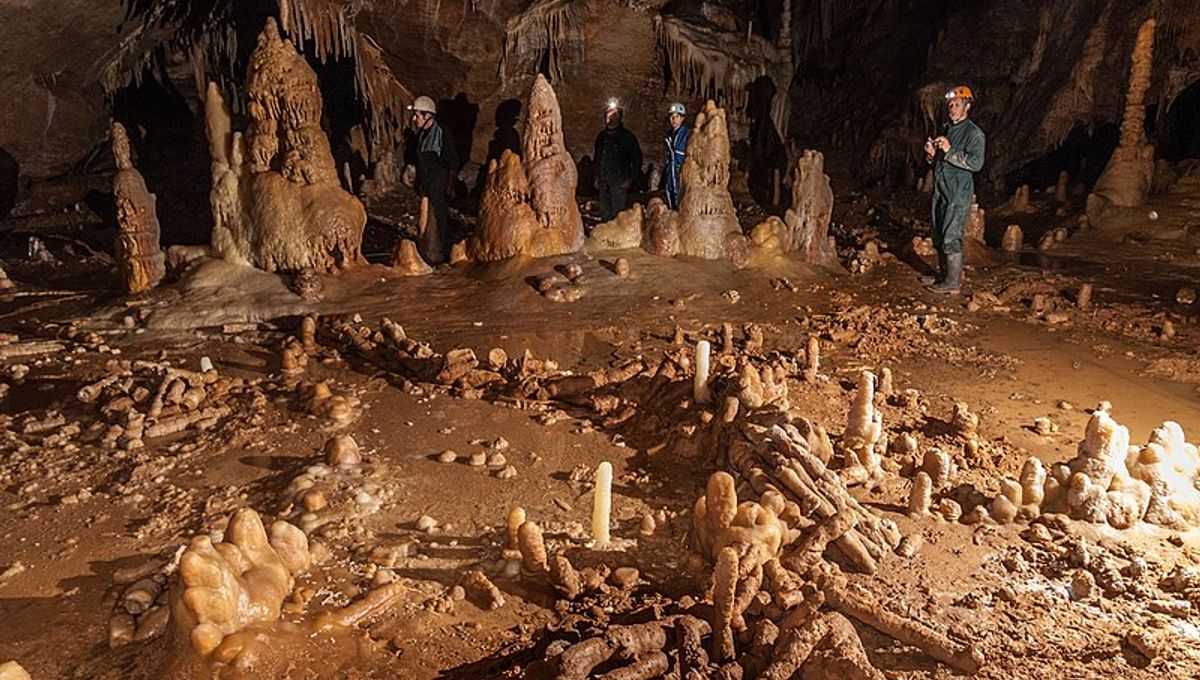
Almost 200,000 years ago, a group of Neanderthals in southwest France constructed a series of odd structures out of broken stalagmites deep inside a cave. Arranged in two large circles and four small stacks, the carefully positioned formations have baffled researchers since their discovery in 1990 and hint at unexpectedly complex Neanderthal behaviors.
Early analyses of the mysterious assemblies revealed that they were at least 47,000 years old, yet the untimely death of the lead researcher halted the investigation for over 20 years. However, in 2016, scientists finally revisited the site, using uranium-series dating to determine that the stalagmites had been in place for around 176.5 thousand years.
“Early Neanderthals were the only human population living in Europe during this period,” wrote the study authors. “Our findings suggest that their society included elements of modernity, which can now be proven to have emerged earlier than previously thought. These include complex spatial organization, fire use, and deep karst occupation.”
Indeed, prior to this discovery, evidence for cultural practices and complicated social behaviors was absent from the Neanderthal record. Yet the researchers say that the creation of these structures required “a necessary simultaneous realization of different tasks and consequently, the existence of some degree of social organization.”
Furthermore, the fact that the arrangements were located “336 meters [1,102 feet] from the entrance of the cave indicates that humans from this period had already mastered the underground environment, which can be considered a major step in human modernity.”
Describing the two annular structures, the researchers reveal that one measures 6.7 by 4.5 meters (22 by 14.8 feet) while the other is 2.2 by 2.1 meters (7.2 by 6.9 feet). “Overall, about 400 pieces were used, comprising a total length of 112.4 m [368.8 feet] and an average weight of 2.2 tons of calcite,” they say.
Weirdly, the Neanderthal builders of these bizarre structures chose not to use whole stalagmites, typically opting for the middle section while discarding the root and tip. Evidence for the use of fire was also detected on 123 of the stalagmites.
Unsurprisingly, the analysis left the researchers with more questions than answers. For instance, “What was the function of these structures at such a great distance from the cave entrance? Why are most of the fireplaces found on the structures rather than directly on the cave floor?” they ask.
“Based on most Upper Palaeolithic cave incursions, we could assume that they represent some kind of symbolic or ritual behavior, but could they rather have served for an unknown domestic use or simply as a refuge?”
Though not able to answer any of these questions, the study authors do conclude that “the Neanderthal group responsible for these constructions had a level of social organization that was more complex than previously thought for this hominid species.”
Source Link: Neanderthals Built Weird Structures Inside This Cave And We Don’t Know Why